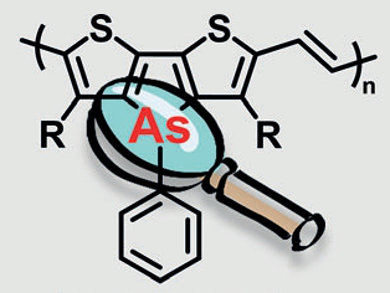Conjugated main-chain polymers containing heavy main-group elements such as germanium, selenium, and phosphorus have attracted much interest because of the interesting optical and electronic effects they can induce. However, conjugated polymers containing arsenic have been a practically unexplored class of material.
Martin Heeney and colleagues at Imperial College London, UK, have synthesized the first dithieno[3,2-b:2’,3’-d]arsole derivative. They found that, unlike the analogous phosphorus-containing material, the arsole derivative was stable to undesired oxidation by ambient air. This allowed the team to prepare soluble copolymers by a palladium-catalyzed Stille polymerization.
Thin films of the resulting polymer were shown to be semicrystalline and to exhibit promising performance in organic thin-film transistor (TFT) devices. According to the researchers, the results demonstrate that arsoles have potential applications in a range of organic electronic devices. In particular, the ability to deliberately tune the oxidation state of the bridging arsenic atom (pictured red) could be interesting for future sensing applications.
- An Air-Stable Semiconducting Polymer Containing Dithieno[3,2-b:2′,3′-d]arsole,
Joshua P. Green, Yang Han, Rebecca Kilmurray, Martyn A. McLachlan, Thomas D. Anthopoulos, Martin Heeney,
Angew. Chem. Int. Ed. 2016.
DOI: 10.1002/anie.201602491




